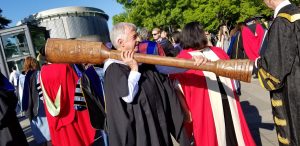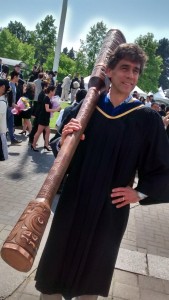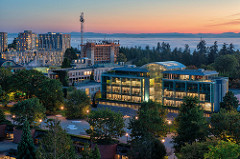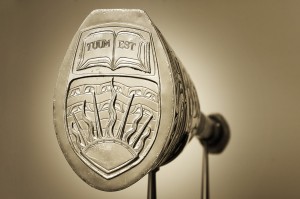Academic freedom and peaceful protest on university grounds
CAFA Statement No. 1/2024
21 May 2024
In recent months, universities in the United States, Canada, Brazil, Chile, Mexico, and Peru, among other countries in the Americas, have been the sites of widespread, intense protests, including occupation of university buildings and/or establishment of encampments on campus, over the war in Gaza. Media outlets and human rights organizations have reported cases of mass illegal/arbitrary detention, the disproportionate use of force by security officers, and arbitrary restrictions on and retaliation for student assembly and expression (including expulsions and suspensions). Further, reports of religious and ethnic violence, harassment against members of the higher-education community, including antisemitic, anti-Muslim, and anti-Arab incidents raise grave concerns.
The Coalition for Academic Freedom in the Americas (CAFA) documents and monitors restrictions on and attacks against academic freedom and university autonomy, and their impact on democracy, justice, and rule of law. CAFA calls on higher-education authorities and public officials to take available measures to ensure a safe space for the free and open exchange of ideas on campus. This includes the respect and protection, within the limits established by law, of the rights to academic freedom, freedom of expression, association, peaceful assembly, the right to protest and personal security on campus.
As recognized in the Inter-American Principles on Academic Freedom and University Autonomy, members of higher-education community, including students, benefit from “(…) the right to express oneself, to assemble and demonstrate peacefully in relation to the topics being researched or debated within that community in any space (…)”. In democratic societies, universities are centers to discuss ideas and situations of public interest, critically and respectfully. This principle must be respected by all stakeholders.
As stated in the Principles for Implementing the Right to Academic Freedom, members of the higher-education community “(…) have the right to engage in expression and discourse with persons and groups inside and outside the academic, research and teaching sector”. Consistent with this, the Canadian Association of University Teachers has stated that restrictions “(…) on freedom of expression and protest can only be justified with clear, objective and demonstrable evidence of danger to persons, serious violations of the law, and major disruptions to the essential operations of a university or college”.
International human rights law recognizes that the right to protest may include a temporary disturbance and inconvenience to daily life. As the Inter-American Commission on Human Rights has determined, the “(…) occupation of buildings, whether public or private, constitute a legitimate form of protest. Any restriction on these demonstrations must be exceptional, necessary, and proportional”.
Higher-education authorities must therefore refrain from taking measures which inappropriately limit peaceful expression on campus or threaten to sanction students or other members of the higher-education community for exercising their rights to free expression, assembly, and academic freedom. On the contrary, higher-education institutions should take all available measures to foster, protect, and model healthy, public debate.
The heated debates surrounding the war in Gaza demand a renewed commitment, by all stakeholders, to the values at the heart of a healthy university. We call on the states and on higher-education authorities to protect and promote academic freedom and institutional autonomy across the Americas, including taking available measures to ensure the rights of free expression and assembly on campus, and in all events, by refraining from engaging in undue restrictions on these rights. We likewise call on all stakeholders – including higher education authorities, public officials, students, educators, and members of the public – to ensure that campuses are spaces of learning, respect, and open debate, free from violence and intimidation, hate speech, harassment, and discrimination, including antisemitism, anti-Muslim and anti-Arab hate.

 Follow
Follow





#UBC time to lay down the mace in graduation and governance #ubcnews #bced #highered
*Apologies to the medievalists again. Customized below is our semi-annual appeal to UBC managers to Lay Down the Mace:
As we count down to and roll through graduation, can we please remove the mace from convocation and governance at the University of British Columbia? The mace had its day in the first 100 years of this esteemed University but that day has gone.
Dalhousie University is currently embroiled in controversy over its mace, decorated as it is to demonstrate racial supremacy (“the rose, thistle, fieur-de-lys, and shamrock, depicting the major racial groups of our country”). Indigenous peoples and advocates have said enough already.
Some traditions just aren’t worth maintaining…
At the Nexo Knights’ Graduation Day,
Jestro grabbed a sword, a mace, and a spear and began to juggle them… The unimpressed crowd started to boo… Sweat broke out on his forehead…. He let go of the mace, and it flew across the arena. The crowd gasped and ducked… Then … bam! It hit the power grid on the arena wall. The area lights flickered, then turned off. Soon the power outage surged throughout the city.
Yes, this really did happen in a Lego story! And in England, Bradford College faculty members called the admin’s decision to spend £24,000 on a new mace for graduation ceremonies a “crass bit of judgement.”
At UBC, things were questionable again this past year. With an opportunity to follow faculty and staff members’ and students’ proposal to divest from fossil fuel investments, in mid February UBC chose to continue to be a part of the problem of climate change instead of the solution. Still heavily invested. And after chalking up a $22m budget surplus, in April & May UBC jumped the line at Wholefoods to draw $7,230 in grocery bag donations. On 24 April an Open Letter signed by 110 faculty members was submitted to the UBC Chancellor Reappointment Committee questioning the process.
The days of the mace in Convocation and governance are of the past and that part of the past is no longer worth reenacting.
It’s difficult to know where this University now stands or what it stands for.
It is time to retire the mace, symbol of aggression, authority, and war. It’s time to march to graduation ceremonies in late May and November with open and empty hands as symbolic of peace and reconciliation of controversies and roles of the President’s Office.
UBC’s mace is a relic but a relic of what? The mace is symbolic speech but what is it saying about us now?
From ancient times, this club, this weapon of assault and offence, the mace was gradually adorned until the late twelfth century when it doubled as a symbol of civil office. Queen Elizabeth I granted her royal mace to Oxford in 1589. From military and civil power derives academic authority. The rest is history and it is not all good.
Dr. Thomas Lemieux, School of Economics, with UBC’s Mace at the May 2015 Convocation.
It is time to retire the macebearer, whose importance is inflated every year by the image’s presence on UBC’s graduation pages leading to Convocation. In pragmatic terms, if the mace falls into the hands of the wrong macebearer or manager at this point, someone’s liable to get clocked with it.
Is UBC’s mace still a respectable appendage to Convocation?
Remember, since that fateful November day in 1997, just five months into Martha Piper’s Presidency, when student activists put their bodies and minds on the line at the APEC protest, Tuum Est adorns both the can of mace sprayed in their eyes and the ceremonial mace that the President’s Office is eager to carry across campus every November and May.
Is it not time to retire the mace?
Comments Off on #UBC time to lay down the mace in graduation and governance #ubcnews #bced #highered
Posted in Academic freedom, Academic Labor, Accountability, BC Education, Budgets, Commentary, Critical University Studies, Faculty, Governance, Maces, Shared governance, Students, Working conditions
Tagged Academic freedom, Faculty, Global Warming, Governance, Protests, Students, University presidents, Working conditions